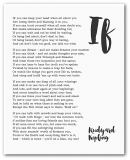
The Simple Keys to Writing an Essay

Whether it is writing an essay about something personal or subjective, such as describing your family, house, or your pet, there are a certain set of rules you need to follow for writing an organized and engaging essay.
The following tips can help:
- Understand the general scope of the topic-what does it talk about?
- Identify your stance-what is your opinion regarding the particular issue at hand?
- Support your position-what reasons do you have for your position?
- Illustrate with appropriate points and examples.
For example, let us consider the above topic, ‘Effects of Commercialization in the Current Generation’.
What does it talk about? The topic asks you to discuss what the possible ramifications of turning education into a market where profits can be made are.
What is your opinion regarding the particular issue at hand? Do you think it is a good idea for education to act as a financial endeavor? Or do you think that education should not be included in money making plans?
What reasons do you have for your position? For example, in case you do not support the commercialization of education, you can reason that putting a price on such a basic human need takes away from its importance. Educating young learners becomes more about earning money than about ensuring that the next generation has the necessary tools and skills to make out a living.
Illustrate with appropriate points and examples. Research the topic and develop concrete examples and instances that justify your stance. Mention specific schools, or teachers or students who have directly or indirectly influenced your opinions.
And that’s it. You now have enough material to write a good essay.
HOW TO STRUCTURE YOUR ESSAY
Once you’ve come up with enough material to include in your essay, there remains the matter of organization. What is the best way to arrange all your points in a way that effectively communicates all your ideas?
There is a basic format you can keep in mind, that every article, blog post or presentation follows.
Introduction. Body. Conclusion.
Let’s look at each of these in detail.
Introduction. This should always be a single para or two at most. In this para you should do three things:
- State the issue you are going to discuss. For example: “There is a clear effect that commercialization has had on education for the generations of today.” You have included all the key words in your opening sentence.
- State what your stance on the issue is. For example: “And it is becoming clearer every day, that this effect has not been positive in almost all spheres.”
- Briefly mention the reasons why you have taken any particular stance.
Body. The body of an essay can run anywhere from 3 to 5 paragraphs. Each paragraph needs to illustrate one point that supports your stance. Open the paragraph by stating this point in two to three sentences. Follow it up by using real life examples and situations.
It is a good idea to always have at least one para that supports the opposite argument to the one you’re making. Such a para should be included just before the final one. You can open with stating what the opposite end of the spectrum is following it up by, again, using examples on why such an argument could be valid.
Conclusion. This is the para that ties it all together. In this para you need to do four things:
- State again what the initial issue being discussed is.
- State what your argument is in a short brief sentence or two.
- State what the opposing argument could be in a brief sentence or two.
- Have a final thought-if it’s a problem being discussed, then offer a possible solution. If you are giving your opinion, give a final statement as to why your argument is more logical than the opposing one.
A good conclusion is brief, efficient and effective. A good way to achieve this is to think of your essay as a speech. And if at the end of it you cannot drop your mike and walk away from the stage, then you probably need to rework your essay’s conclusion.
Subscribe with us
Other articles
-
Posted by: Musicoholic M. | Date: 29/11/2016
-
Posted by: Nathan M. | Date: 29/11/2016
-
Posted by: Hamza S. | Date: 04/01/2019
-
Posted by: Olaoluwapo S. | Date: 21/12/2018
-
Posted by: Tamara D. | Date: 06/05/2019
-
Posted by: Aisha . | Date: 11/08/2020































